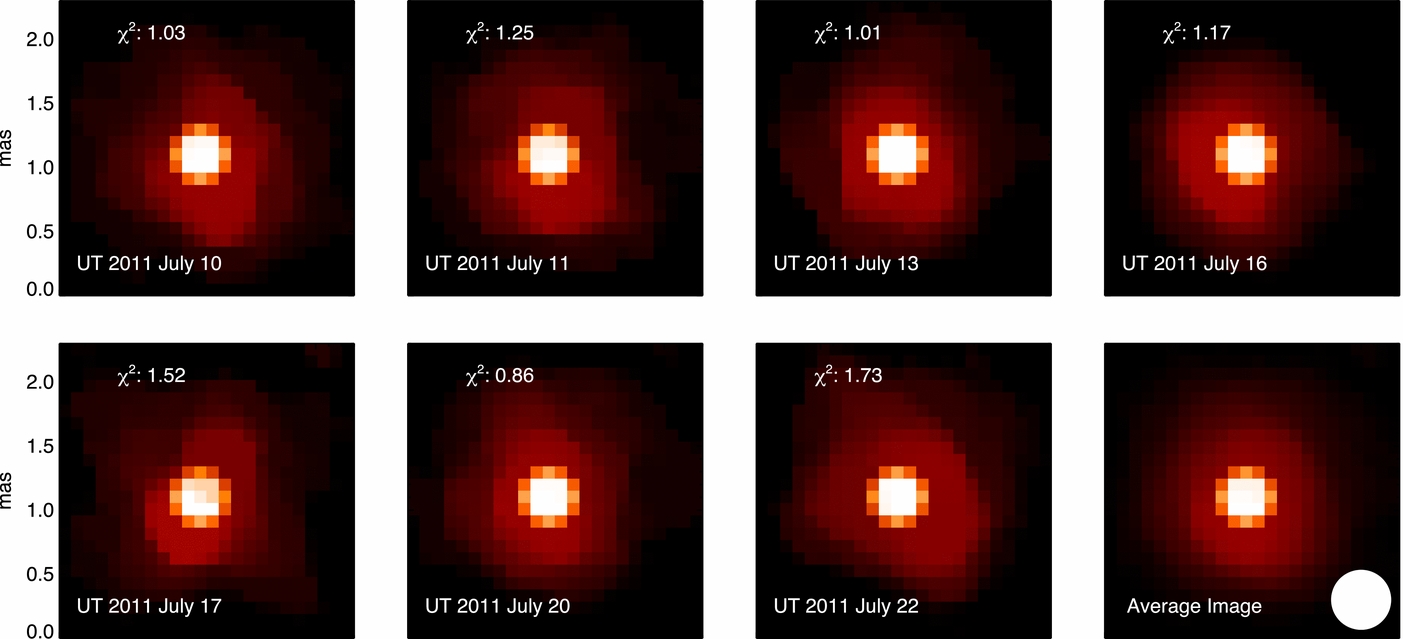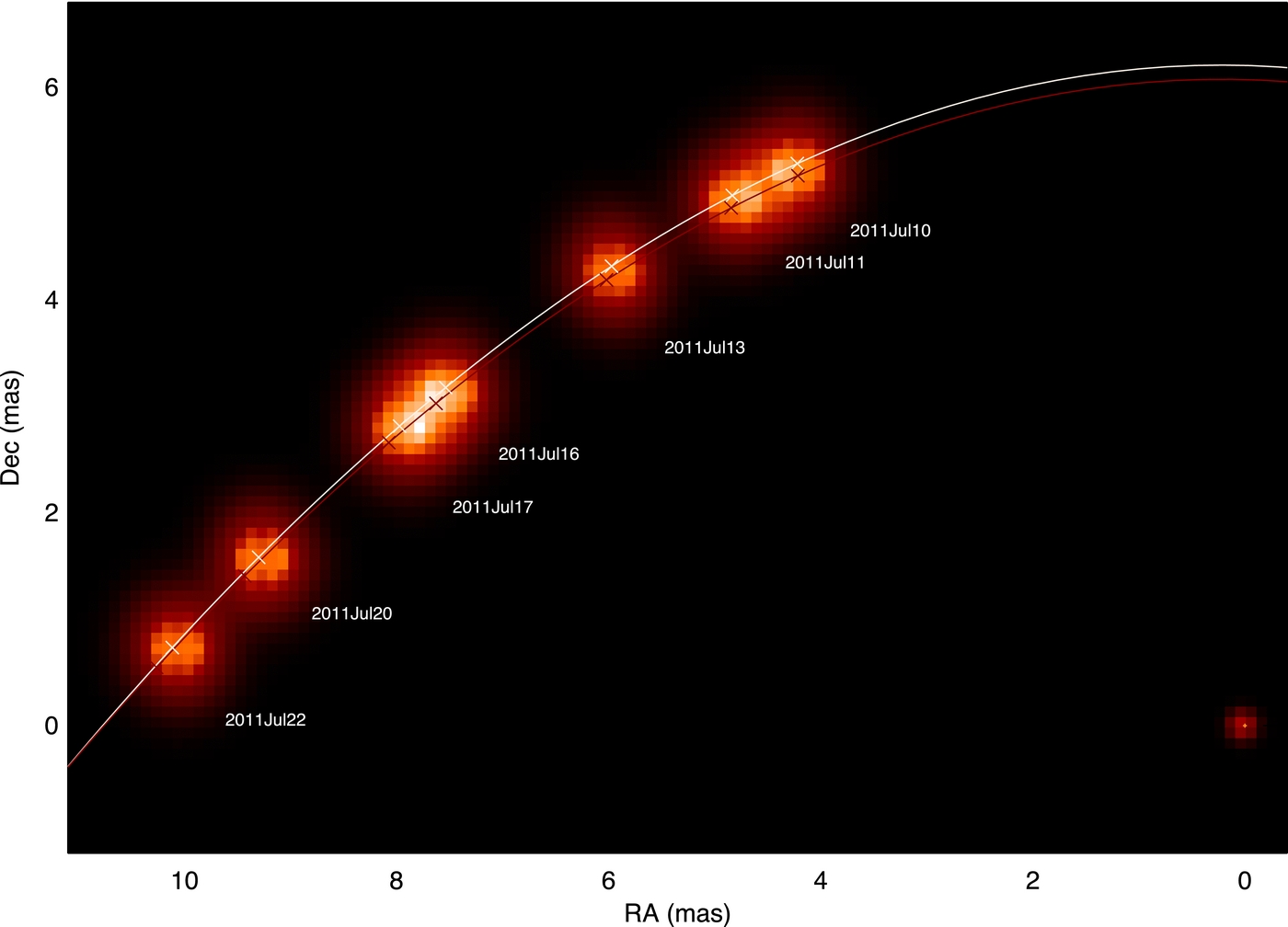
The highly eccentric Be binary system δ Sco reached periastron during early 2011 July, when the distance between the primary and secondary was a few times the size of the primary disk in the H band. This opened a window of opportunity to study how the gaseous disks around Be stars respond to gravitational disturbance. The disk was imaged for the first time using the CHARA Array on seven nights after the periastron passage. Asymmetries were detected in the inner disk that could be explained by spot-like emission, although the data lack sufficient angular resolution to be sure of this interpretation and cannot yet rule out spiral density waves or other more complicated geometries.
The first seven panels in the figure above show the images of the primary star and the disk from the seven nights obtained with the CHARA Array. The last panel shows the average image of all seven nights, and the angular resolution of CHARA/MIRC in the lower right corner. The disk images vary from night to night. It is hard to distinguish if the variation reflects real disk structure or some artifact from the imaging reconstruction because the disk size is only about twice the angular resolution. We conclude that imaging the δ Sco disk is at the limit of the imaging ability of CHARA/MIRC. The average image shows a mostly symmetric disk, with the elongation along north and south which agrees with the disk position angle from modeling.

δ Sco images from the global model fitting of seven nights of CHARA/MIRC observations showing the orbital position of the two stars during each epoch. The secondary is fixed at the origin for all seven nights, and the primary along with its disk change their positions relative to the secondary from night to night. The white solid line and crosses are the predicted orbit and primary positions on those seven nights from the global model. The red line and crosses are the orbit and positions of the primary from binary model fitting of NPOI data only.
Reference:
Imaging Disk Distortion of Be Binary System δ Scorpii Near Periastron
Che, X., et al., 2012, Astrophysical Journal, 757, 29



